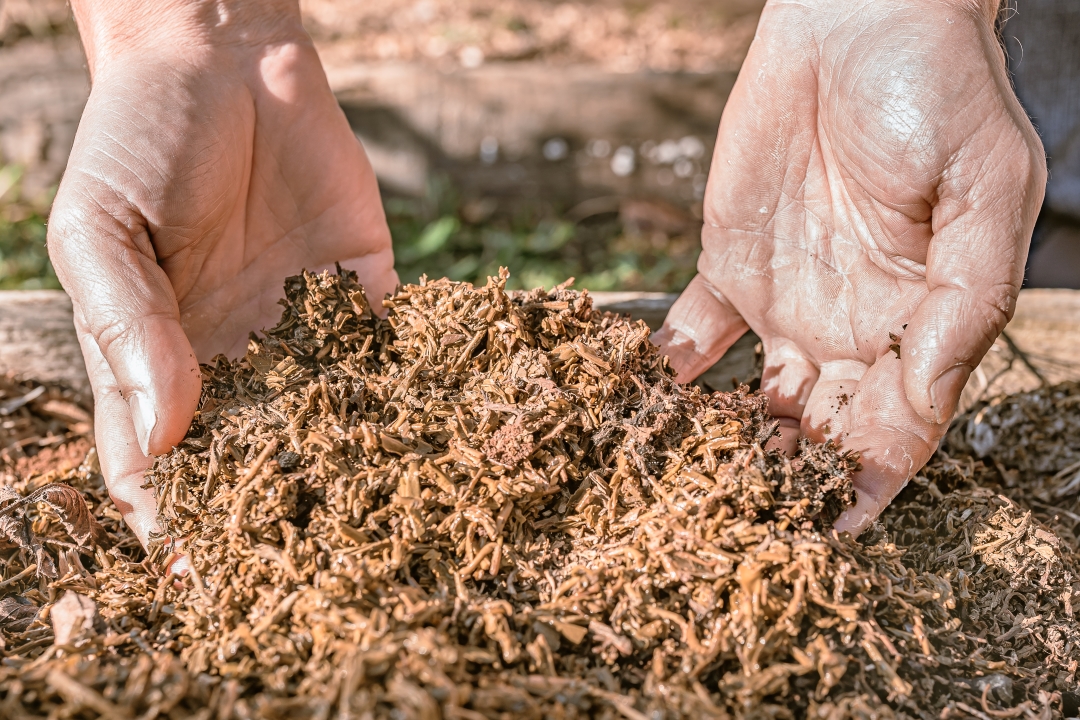Tea, the most common and widely consumed beverage after drinking water, with a global market value projected to reach US$70.85 billion by 2028. A favourite drink across cultures and countries from India to the UK to China, with a wide range of health benefits from lowering cholesterol levels to improving sleep quality. All from mixing the leaves of the humble shrub, Camellia sinensis, with boiling water.
However, this beloved drink isn’t really the environment’s cup of tea. As well as contributing to deforestation for plantations and soil degradation through excessive fertiliser use, tea also has a significant waste problem, as the leaves are typically discarded after use. At present, around 5 million tonnes of tea waste are disposed of in landfills or incinerators every year, creating a serious waste and air pollution problem that is currently set to worsen, as annual tea consumption is projected to increase to 7.4 billion kilograms by 2025.
But this need not be the end of these leaves’ use. Unbeknownst to many, tea has a wide range of chemicals and organic molecules that give it its rich taste, many of which are still retained in the leaves even after use. If extracted and/or utilised properly, these chemicals and molecules can be reapplied for a mind-boggling number of commercial uses. Given its low costs and accessibility, treating tea waste as a pollutant is therefore not only an environmental cost, but an economic one too.
So, what exactly are these uses?
Agricultural Use
Tea waste may not taste very nice to us, but in fact, its chemical properties and high nutrient content make it a valuable food source and fertiliser for livestock and crops.
As a livestock feed, tea waste is high in amino acids and proteins, leading to improved weight gains and higher meat quality in animals that eat it. Moreover, as the fat-soluble nutrients of tea are not flushed out of body, it can also improve the flavour of meat, to the point where some Japanese pig farmers even market their pork as ‘tea-fed’. Given these properties and the quantities produced, tea waste could be a useful and more environmentally friendly replacement for soyabean-based feed, in turn alleviating soyabean-driven deforestation in South America.
As a fertiliser, tea waste contains high amounts of potassium, phosphorous and nitrogen that are easily leached into the soil with rainwater, as well as other nutrients not found in artificial fertilisers. Tea also has great water retentiveness and when spread on soils as a mulch, helps them to conserve moisture and increase the climate resilience of crops. As a result, tea waste fertilisers have been found to significantly increase growth rates and crop yields, and increased use of them could reduce the costs associated with artificial fertilisers.

Pollution Control
While the growing of tea may add a lot of pollutants into the environment, tea waste can conversely help to remove toxins from it through adsorption – when a substance binds to molecules and retains them on its surface.
The cell walls of tea are porous and contain elements that react with heavy metals and other toxins, causing them to diffuse onto the tea and out of the environment. Indeed, a 2020 study found that brewed tea was able to efficiently remove lead, nickel, cadmium and zinc from wastewater. The adsorptive properties of tea waste can be further increased by converting it to activated carbonaceous substances like biochar, which increases the surface area available for adsorption, with efficiencies ranging from 90% to 95%.
Moreover, pollution control using tea waste derivatives is not only as efficient (if not more so) than current industrial means like catalytic oxidation or charcoal-derived biochar, but is also considerably cheaper, making it a cost effective and easily accessible means of soil and water purification.
Energy
Another use for tea waste derivatives is as an alternative fuel, particularly for poor and rural communities.
Biochar made from tea waste can be formed into briquettes for cooking, replacing wood fuel for ovens and thereby potentially alleviating subsistence deforestation. Similarly, bio-oil (produced using similar methods to biochar) and biogas (produced through anaerobic digestion) can be used as a substitute for fossil fuels in energy generation. Most excitingly, vermicomposting –composting using earthworms– can even turn tea waste into a source of electricity generation through the release of metal ions, acids and salts that can serve as electrolytes; a potential (power) lifeline for off-grid rural communities.
Importantly, energy expenses of similar crop-to-bioenergy projects have been found to be much lower than when using conventional energy sources. In Kenya, the Makomboki Tea Factory’s switch from firewood to biochar briquettes reduced its annual energy costs from US$542,000 to US$295,000. While in this case, the briquettes were derived from other types of agricultural waste, the result would likely be similar for ones made from tea waste.
Chemical Uses
With so many different chemicals in tea waste, it’s not surprising that at least some of them can be usefully recycled.
One of these is tea’s most famous component: caffeine. While typically associated with tea and coffee, caffeine actually has a wide range of uses across multiple industries, including cosmetics, pharmaceuticals and (appropriately) instant tea. Extraction can be done with relatively simple processes in as little as four minutes, depending on the exact processes used.
Financial Perks
Despite its low costs and high potential in a wide array of industries, the real-world commercial use of tea waste is still very limited, as evidenced by the high quantities discarded every year. However, in light of growing efforts to reduce and reuse agricultural waste, as well as the growth of sectors that can use tea waste derivatives, the creation of a specific market for them could yield considerable benefits for investors.
For instance, the growing demand for sustainable agriculture is leading to a greater adoption of organic biofertilisers, such as the ones tea waste can be used for. As a result, production of such biofertilisers is increasing, with the global market for them being valued at US$1.60 billion in 2020 and projected to grow to US$3.98 billion by 2028. Similarly, the global market for biochar is projected to grow to US$450.58 million by 2030, and the market for waste-derived biogas is projected to do even better, reaching US$126.2 billion by the same year.
Given these values, it is not hard to imagine a profitable market for tea waste derivatives. With so much tea waste being produced every year, the creation of one could not only significantly reduce its environmental impacts, but potentially also create significant social and financial benefits for manufacturers and private investors.
Author: Seneca Impact Advisors
For more information, please contact impact@senecaimpact.earth






